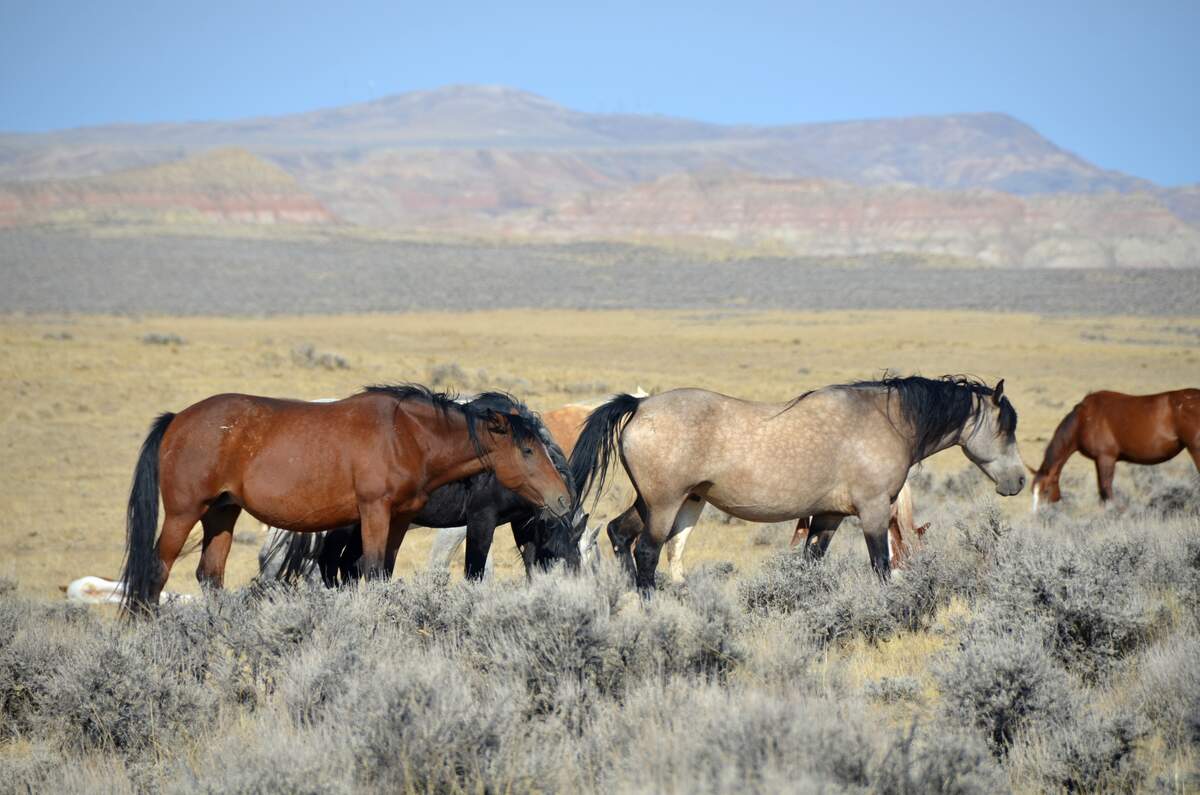

I Love Horses Day
Observed
annually on July 15th (since 2012)
Dates
Tags
Pets & Animals
Hashtags
Sources
http://www.giftypedia.com/I_Love_Horses_Day
https://en.wikipedia.org/wiki/Horse
https://www.amnh.org/explore/ology/zoology/all-about-horses
https://www.aspca.org/news/its-national-i-love-horses-day-and-horses-need-you
https://www.cowgirlmagazine.com/3-fun-ways-to-celebrate-national-i-love-horses-day/
https://www.anrdoezrs.net/links/100298379/type/dlg/https://www.newspapers.com/image/363852504/
https://www.anrdoezrs.net/links/100298379/type/dlg/https://www.newspapers.com/image/600367856/
Love is shared for horses today on I Love Horses Day! Horses are of the species Equus caballus. There are over 300 breeds, with many different breeds being made over the years by mating horses with desirable traits, with the aim of developing the horses for different uses. New breeds are created when the traits get passed down through many generations.
Horse breeds are generally divided into three main categories: hot-blooded, cold-blooded, and warm-blooded. Hot-blooded horses are slim and long-legged. Their temperament is usually bold, they learn quickly, and they are spirited. They are known for their speed, endurance, and agility. Examples are "oriental horses" like Akhal-Teke, the Arabian horse, and the Barb horse, as well as Thoroughbred horses. Cold-blooded horses are muscular horses, with calm and patient temperaments. They are good for slow and heavy work. Their temperament and strength make them ideal for pulling plows or carriages of people. They include draft horses and some ponies. The Belgian and Clydesdale are two breeds of cold-blooded horses. Warmblooded horses are developed from crosses between hot bloods and cold bloods. They are usually developed for specific riding purposes. Trakehner and Hanoverian are two warmblood breeds.
Similarly, there are three main horse body types: ponies, light breeds, and heavy breeds. Ponies are small and stocky and are usually considered to be ponies if they are under 58 inches in height. Light breeds have long, flexible necks, and long, thin legs, which make them fast. They are good at racing, riding, herding, and jumping. Heavy breeds, also called draft horses, are large horses with sturdy, short legs and short, muscular backs and hindquarters, that are good for carrying heavy loads and pulling plows and wagons.
Horses began being domesticated around 4000 BCE, and the practice was widespread by 3000 BCE. There also still are wild horses, as well as feral horses, which are horses that were previously domesticated, and semi-feral horses, which have some contact with humans and are privately owned, but spend most of their time in the wild on undeveloped lands.
Horses have four main gaits: walk (4 mph), trot or jog (8.1 mph to 11.8 mph), canter or lope (12 to 15 mph), and gallop (25 to 30 mph). They are adapted to run, which makes it easy for them to quickly escape predators. They only sleep about three hours a day, and do so in short intervals. They can sleep lying down or standing up, but they only get light sleep when standing, and must lie down to get REM sleep. They sleep better in groups because some sleep while others stand watch for predators.
Adult female horses, called mares, carry their young for about 11 months. Adult male horses that aren't castrated are known as stallions, while castrated male horses of any age are geldings. Horses less than a year old are foals, and yearlings are between the ages of one and two. A colt is a male horse under the age of four, while a filly is a female horse under the age of four. Horses are fully developed by the age of five and live to the age of 25 or 30.
Horses may form relationships with other horses, other animals, and humans. They communicate by whinnying and nickering. They play many roles and take part in many activities, making them easy animals to love. Some sports horses take part in are dressage, show jumping, eventing, rodeo, horse racing, polo, jousting, and buzkashi. Racing is divided into three types: flat racing, steeplechasing (racing over jumps), and harness racing (horses pull a driver in a light cart called a sulky). The Kentucky Derby and the Belmont Stakes are two prominent horse races.
Horses perform a whole range of types of work. They are usually ridden with a saddle and bridle; if they are driven they also have a harness and a vehicle. Horses are used to round up cattle on cattle ranches. Millions of horses are still used for transportation and agricultural work, especially in less developed areas. They are used for crowd control, being ridden by mounted police. They are used in search and rescue operations, especially for hikers and children. They are ridden in areas where the soil can't be disturbed, like in nature preserves and wilderness areas, and are regularly used by game wardens and park rangers. They serve therapeutic purposes, being ridden by those with physical and mental disabilities, and have ceremonial roles, such as pulling royalty and other dignitaries in carriages. They also work in entertainment, appearing in film and television.
Historically, horses have been used for mail delivery and have served in battle. Their use in warfare was widespread by the Bronze Age, and they are still used in some capacities today, in ceremonial roles, and for reconnaissance and transportation in areas of rough terrain. Today they are also used for historical purposes, such as in reenactments of famous battles. There are many types of horses and many roles they play, and for all this, we love them and celebrate them today with I Love Horses Day!
How to Observe I Love Horses Day
- Support horses. Adopt a horse through My Right Horse, or use their website to connect those looking to adopt horses with horses. Join the ASPCA Horse Action Team. Support the passage of the Save America's Forgotten Equines (SAFE) Act. Get involved with the EQUUS Foundation.
- Ride a horse. If you don't have your own horse, find a place near you that offers horseback riding. Sign up for lessons if you've never ridden a horse.
- Ride in a horse-drawn carriage.
- See some horses in the wild.
- If you have a horse, give them their favorite treat or take them to their favorite spot.
- Attend a horse race.
- Listen to songs about horses, watch a film about horses, or watch a television program that focuses on horses.
- Read a book or magazine about horses.
- Learn about some famous horses.
- Learn about different horse breeds.
- Attend a reenactment that includes horses, such as a Civil War battle reenactment.





















